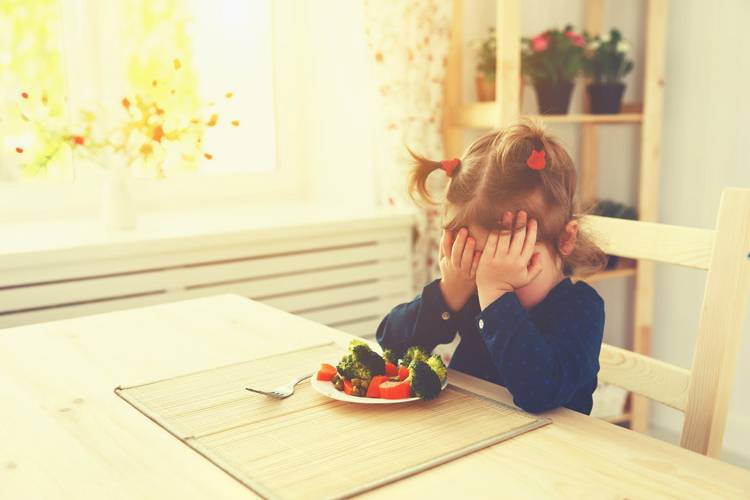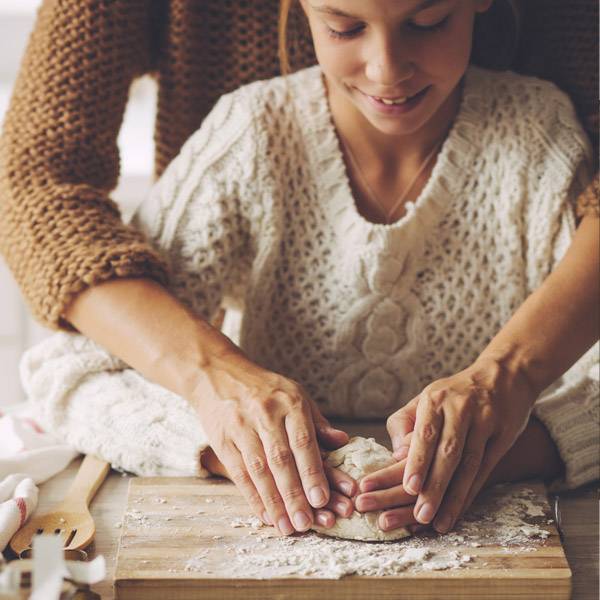My child won’t eat, what can I do?
A varied diet is essential for the development of children, but often as parents it is very difficult to make our children eat a healthy, varied diet. Giving up is not the solution, but we cannot force them either.
child care
Share

Mealtimes are not just another moment of a child’sday. They are perhaps the most important ones. They are not just times to eat,but are also time spent with the family, and for this reason we must apply ourselves to giving these moments the importance they deserve.
Routines are fundamental in a child’s life. If they learn from a young age that they will always (except special occasions) eat at the same time, at the same table and with the same people; they will see it assomething important in their family and which must be respected.
In the first years of their lives they usually eat before the rest of the family, but it is important for their education that as they grow up they eat as their parents do, that is with the family. For this reason, you must create an appropriate atmosphere at mealtimes in which you can talk to your children about your days, and ultimately, communicate.
It is recommended to avoid distractions such as cartoons or tablets during mealtimes. For that you can choose other moments,but you must not allow it to be a condition without which they will not sit at the table. Any type of exterior entertainment distracts children and relegates what really matters to the background. You can, however, play with them at guessing the colours of the meal or counting how many mouthfuls they have left. You can tell a story, but it is better to not have electronic devices at the table.

MAKE IT ATTRACTIVE
Children grow and learn by playing because playing entertains them. So when they eat, colours, shapes and textures are important too. A plate of chicken might not catch their attention and they may refuse it. But if the same plate has a few slices of tomato and some peas, you’ve added two bright colours and the food is more attractive for the child.
FIND ALTERNATIVES
There is no need to worry if you have tried various times to make your child eat a new food and they refuse it. They may not like it, but you can try them with something else that provides them with the same nutrients. For example, if they don’t like swordfish, try giving them hake or another type of fish which provides them with the protein they need. Or if they don’t like yoghurts, you can swap it for cheese or walnuts which also contain calcium.
Also, if you mix ingredients which they don’t like much with others which they adore, you create a positive association and they will end up liking the ingredient which didn’t convince them before.
The key is maintaining a balanced diet. Let them have all the necessary nutrients (protein, carbohydrate, fruit, vitamins, mineral sand in smaller quantities, fat) but without worrying because they dislike certain foods. You must never force them to eat; otherwise they will hate it and will associate it with a bad moment of the day.
With a bit of creativity you can become the best chef for your children.
HANDS ARE IMPORTANT
When they start to eat, children want to touch food with their hands and often as parents we prevent them from doing so. Because they’re small, they don’t understand why. They use their index finger and thumb as a kind of claw to choose, pick up and put any solid food in their mouth. So at the start, you must let them use this ‘claw’. In this way they get to know new textures and shapes. Little by little over time you can introduce a knife and fork.
COOK WITH THEM
If you cook with them, or let them help you to hold a utensil or food, or to lay the table, they learn in a fun way and almost without realising. Educating them in food is very important for them to grow up happily and healthily, and this is a good way for them to learn to value food and the importance of eating well. Also, anything they learn as children will be useful to them forever.

Enjoying good food without expecting it as a reward
Educate on food
Enjoying good food without expecting it as a reward






